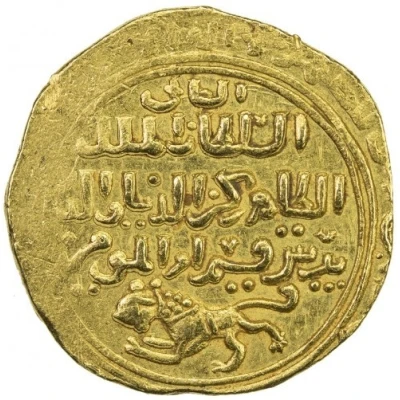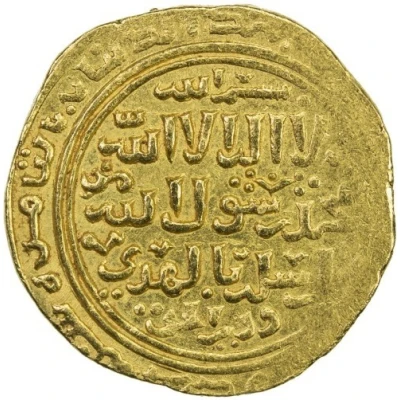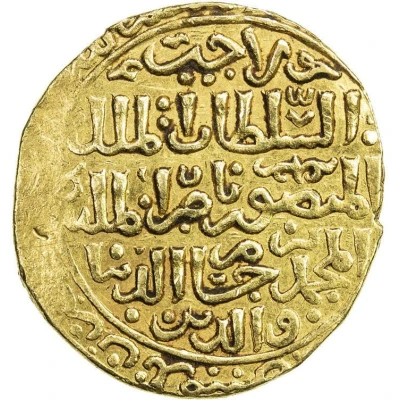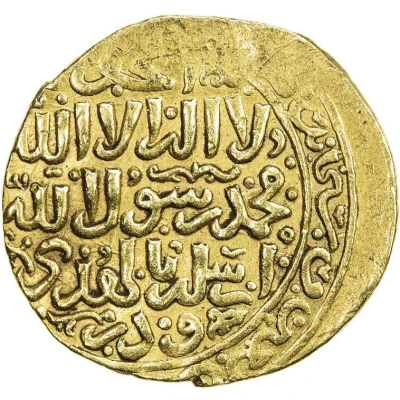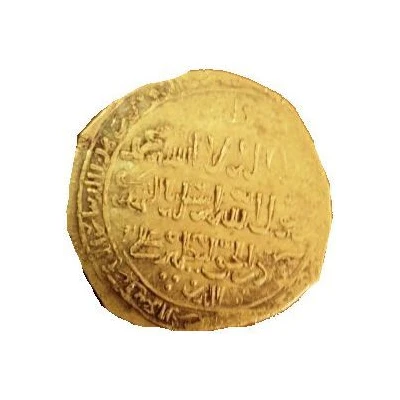
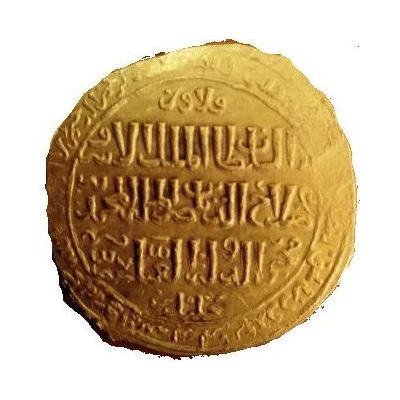

Dinar - al-Ashraf Khalil ND
| Gold | 3.2 g | 25 mm |
| Issuer | Mamluk Sultanate |
|---|---|
| Sultan | Khalil (1290-1293) |
| Type | Standard circulation coin |
| Years | 1290-1293 |
| Value | 1 Dinar |
| Currency | Dinar (1250-1517) |
| Composition | Gold |
| Weight | 3.2 g |
| Diameter | 25 mm |
| Shape | Round (irregular) |
| Technique | Hammered |
| Orientation | Medal alignment ↑↑ |
| Demonetized | Yes |
| Updated | 2024-10-05 |
| Numista | N#75756 |
|---|---|
| Rarity index | 97% |
Reverse
Script: Arabic
Comment
Historical detail:Al-Malik al-Ashraf Salāh al-Dīn Khalil ibn Qalawūn (Arabic: الملك الأشرف صلاح الدين خليل بن قلاوون); (c.1262 – 14 December 1293) was the eighth Mamluk sultan of Egypt from 1290 until his assassination in December, 1293. He is most famous for conquering the last of the Crusader states in Palestine with the capture of Acre in 1291.
The Siege of Acre (also called the Fall of Acre) took place in 1291 and resulted in the loss of the Crusader-controlled city of Acre to the Muslims. It is considered one of the most important battles of the period. Although the crusading movement continued for several more centuries, the capture of the city marked the end of further crusades to the Levant. When Acre fell, the Crusaders lost their last major stronghold of the Crusader Kingdom of Jerusalem. They still maintained a fortress at the northern city of Tartus (today in north-western Syria), engaged in some coastal raids, and attempted an incursion from the tiny island of Ruad, but when they lost that as well in 1302–3 in the Siege of Ruad, the Crusaders no longer controlled any of the Holy Land.
Interesting fact
One interesting fact about the Standard circulation coin Dinar - al-Ashraf Khalil ND (1290-1293) from Mamluk Sultanate made of Gold weighing 3.2 g is that it features a unique blend of Islamic and Mongolian influences in its design. The coin's obverse side features a rendition of the Mamluk Sultanate's emblem, which includes a crescent moon and a five-pointed star, while the reverse side features a stylized depiction of a Mongolian horseman, reflecting the Mamluk Sultanate's brief period of Mongolian rule. This blend of styles is a testament to the rich cultural heritage of the Mamluk Sultanate and its ability to absorb and adapt different artistic traditions.
